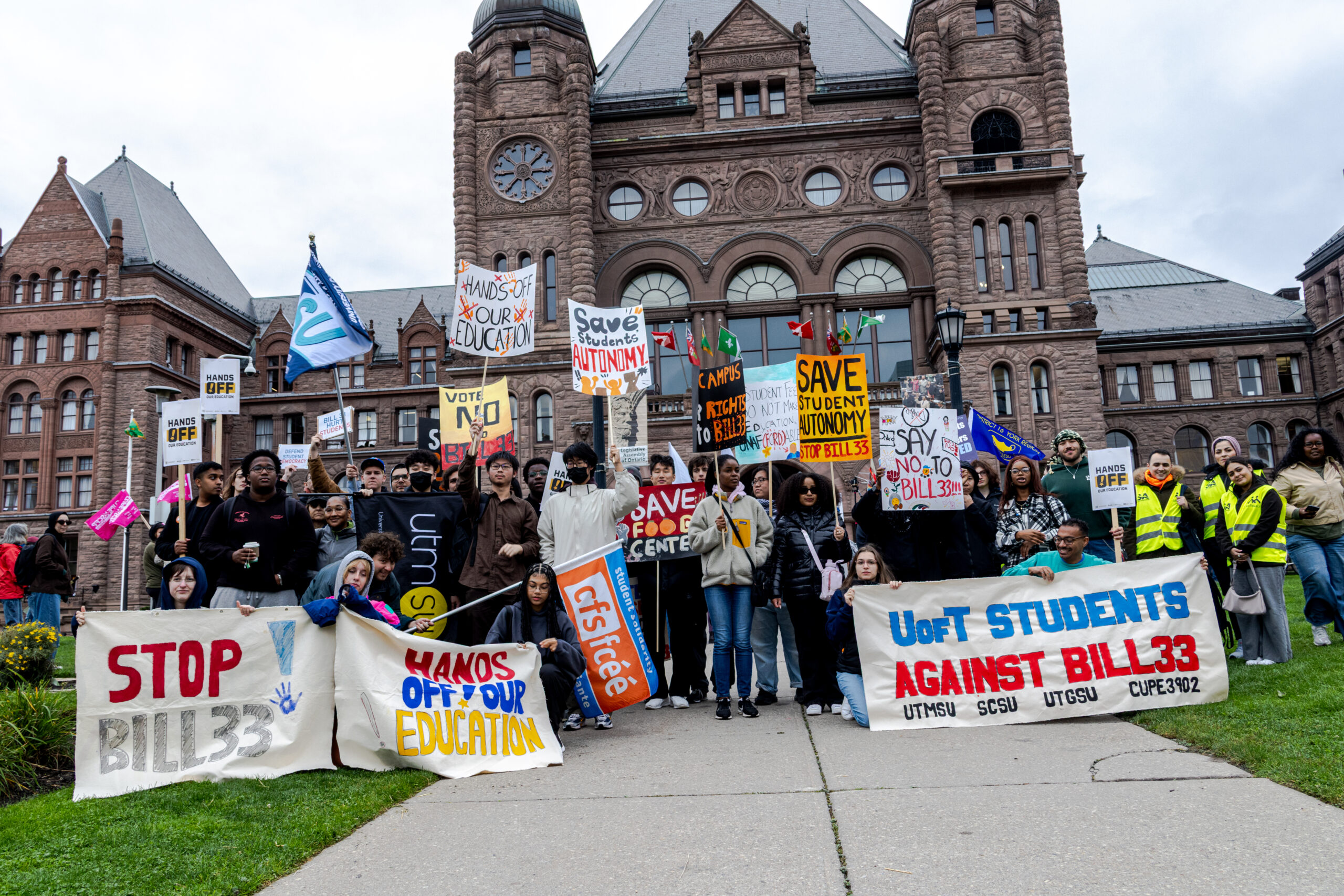Nursing student says lack of action by the college makes her feel that students are not the priority
There has been a lot of talk about anti-abortion protesters on campus this semester due to the Toronto Against Abortion (TAA) group protesting at the college on a regular basis.
Some students have been less than pleased to see the anti-abortion demonstrators on campus with graphic signs and trying to talk to students about why they believe abortion is wrong.
But what seems to have some students more upset is the apparent lack of action by George Brown College’s (GBC) administration to remove them.
Some students took to Twitter to voice their disappointment at how the school is handling the protests after the Canadian Centre for Bio-ethical Reform (CCBR) protested inside the school on April 3.
Disgusted at the fact that @GBCollege would allow an anti abortion protest on their campus. Beyond inappropriate for a college campus ✋
— Alexandra Victoria (@alexx_dimi) April 3, 2017
@GBCollege
1
The last few times you said nothing could be done bc they were not on property. Well THIS time the antichoicers were all here.— Elizabeth Lilac (@LizzLemon205) April 3, 2017
@GBCollege allowing anti-choicers to remain on campus and harass students is violence. They are threatening students.
— Arielle (@unicornarielle) April 3, 2017
Heartened to see folks outside of George Brown College blocking anti-choice protesters’ signs and handing out reproductive rights buttons! ?
— Bronwyn (@morningfindsyou) April 3, 2017
In an email to students on April 7, GBC president Anne Sado said that while the school does not necessarily hold the views of the protesters, that the school understands that abortion is a sensitive topic and that counselling services are available for students who need them.
Jessica Switzer, a nursing student at the Waterfront campus, emailed Sado about the school’s response to the protesters and was told that another member of the administration would talk to her further.
“It was a very short response that completely ignored the vast majority of the email I sent, apart from my questions regarding what is considered public/private property with regards to our institution,” said Switzer adding that the response felt passive-aggressive to her.
“It makes me feel as though myself and the other students that attend GBC are not the priority of the administration and that the administration of the school is hiding behind arbitrary definitions as a Crown institution to avoid having to take a proper stance regarding the presence of the protesters inside campus buildings,” said Switzer.
Karen Thomson, GBC’s vice president of student life, alumni and marketing, said that legally the school cannot remove the group from campus because of the Charter of Rights and Freedoms.
If the groups are disrupting classes or the learning of students then the school can ask them to leave, but as long as they remain peaceful Thomson said the school’s hands are tied.
“George Brown College is a public institution, so facilities are accessible to the public,” said Thomson. “All advocacy groups are permitted on campus as long as they are peacefully protesting.”
In an email to The Dialog, William Reid, the Student Association’s legal counsel wrote that Thomson’s take was “essentially correct.” Reid added that “the public areas of community colleges are open to the public, not just the college community, and that individuals may exercise their right to free speech in such spaces, subject to being removed by security only if their conduct warrants it.”
To ensure students’ well-being during the exam period, GBC’s administration asked TAA and the CCBR to stay away from campus during the week of April 17.
In emails obtained by The Dialog both groups told the college that they were not planning any protests during the exam period. Blaise Alleyne from TAA said they would resume visits to campuses in the future.
Thomson said as far as keeping students in the loop, it’s up to the protest groups to inform the school when they will be appearing on campus, so the school can send out an email. So far, neither group has let administrators know prior to coming to campus, and that has hindered GBC’s efforts to inform the students.
Switzer said she didn’t feel the college telling students to go to counselling was the appropriate response.
“It says to me that while the administration is perfectly aware that the presence of these types of protesters and the imagery that they use can be very detrimental to the mental health of the students within the institution, they are going to allow their presence inside the campuses regardless of that fact,” she said.
Thomson said that other efforts to ensure student safety include sending campus security to meet the groups and make them aware of human rights policies regarding free speech in the school.
“We have to protect students while respecting the group’s views,” said Thomson. “We are not sponsoring the views of any group coming to campus.”


